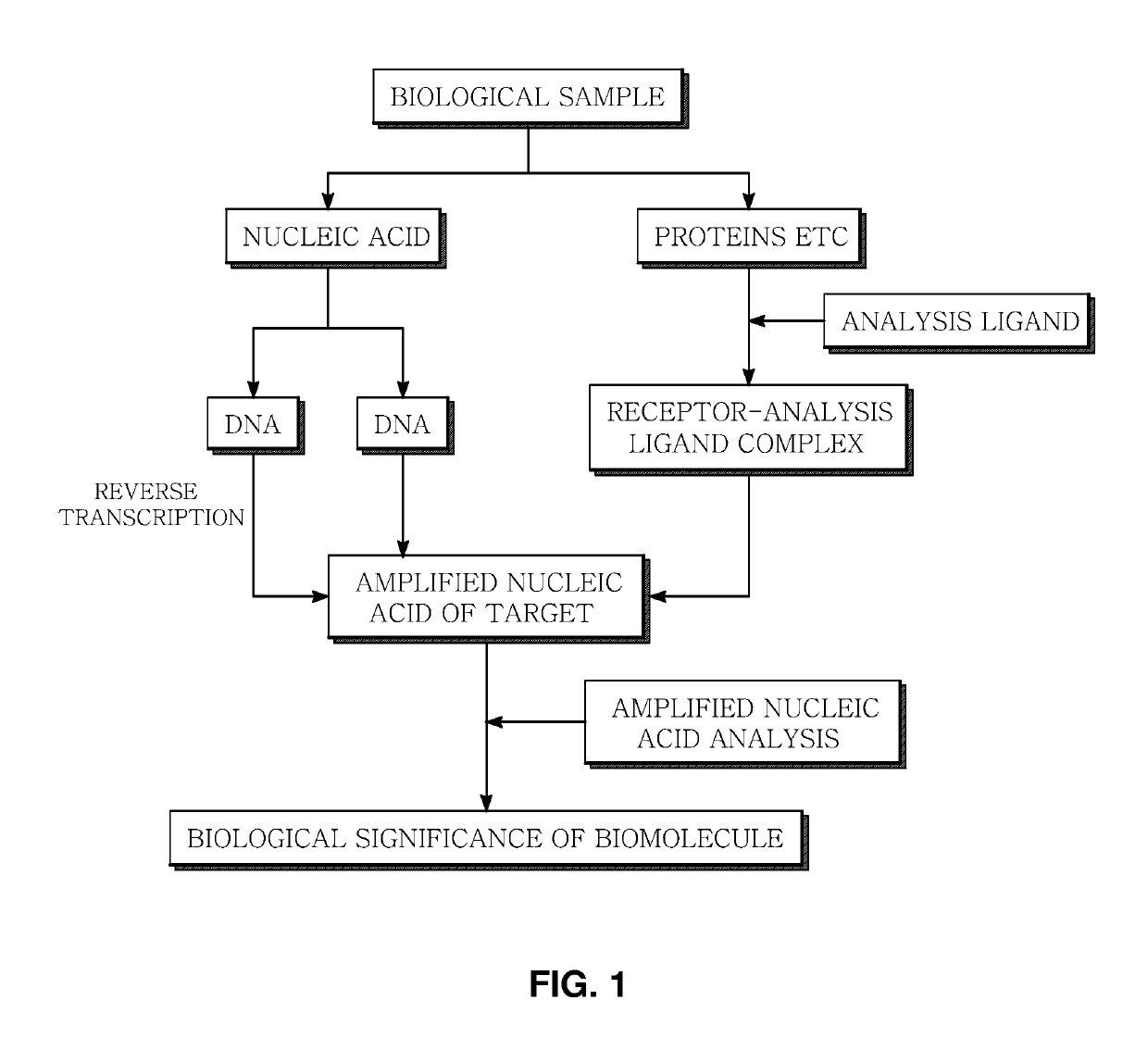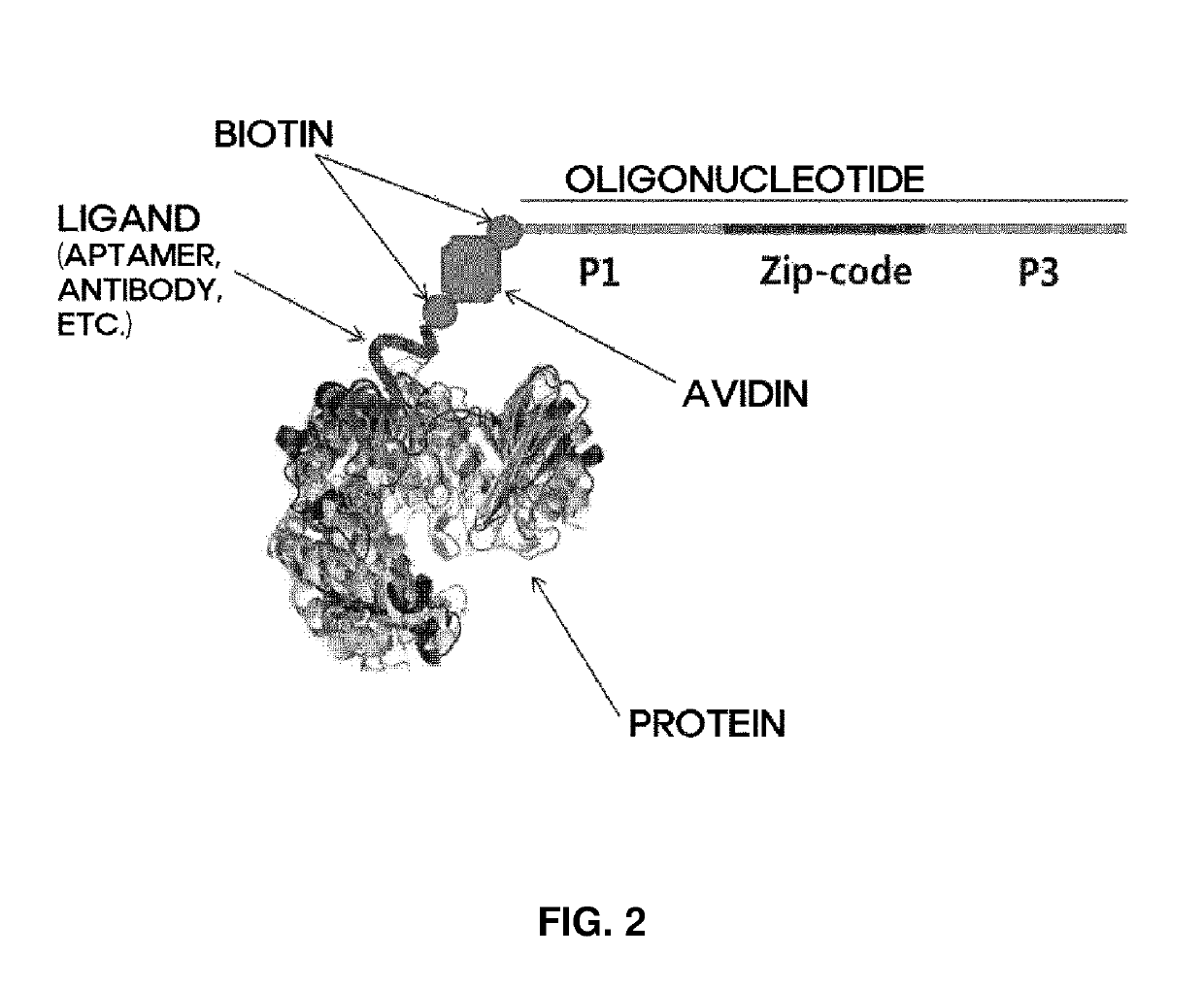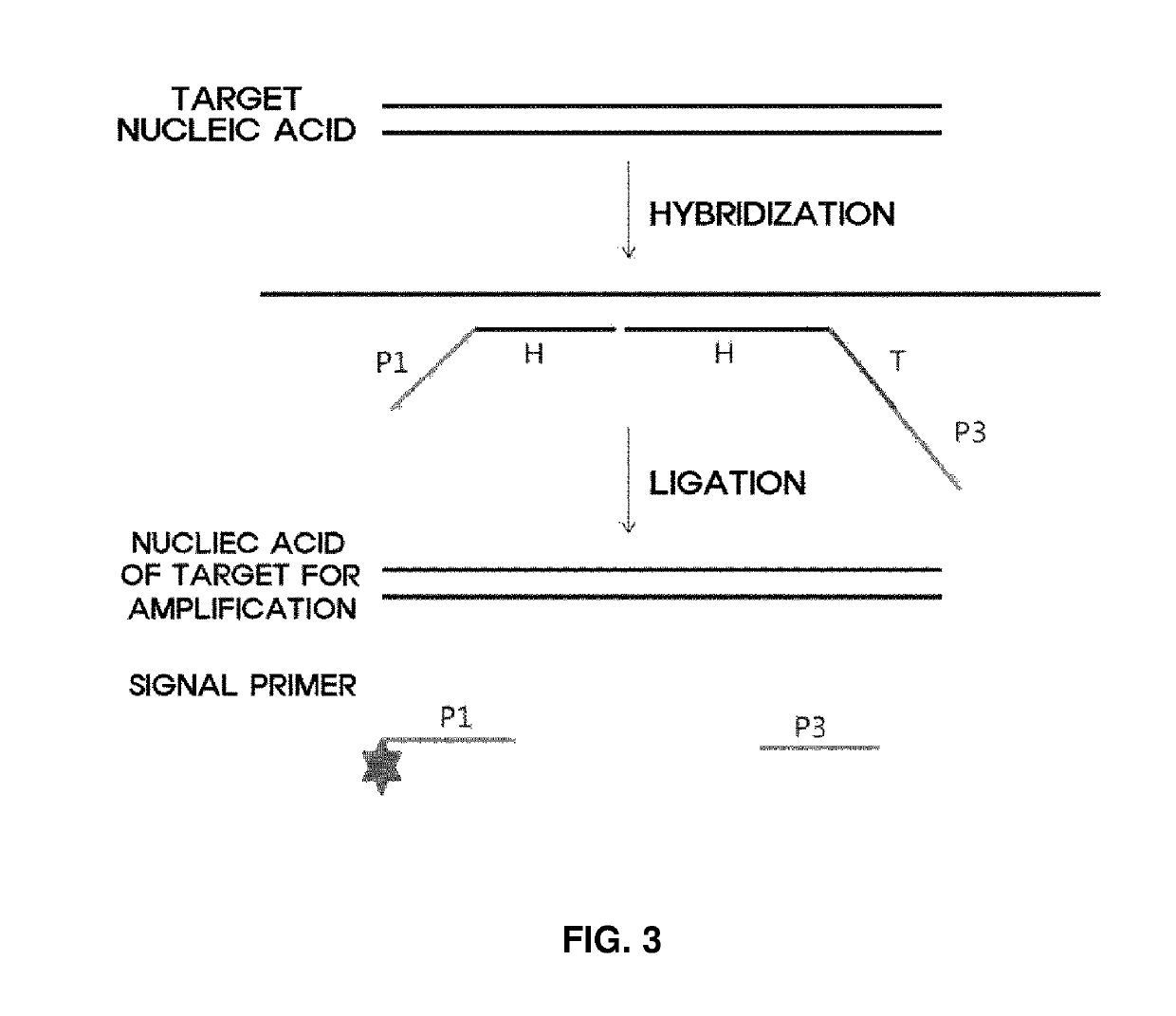Method and apparatus for analyzing biomolecules by using oligonucleotide
a technology of oligonucleotide and biomolecule, applied in biochemistry apparatus and processes, material testing goods, climate sustainability, etc., can solve the problems of inability to say that one technique is better than another, require improvement in the reliability of hybridization signals, disadvantages of impossibility of real-time detection, and difficulty in accurate quantitation, etc., to achieve high fluorescent sensitivity and effectively determine biological differences between individuals
- Summary
- Abstract
- Description
- Claims
- Application Information
AI Technical Summary
Benefits of technology
Problems solved by technology
Method used
Image
Examples
example 2
on of Ligand for Analysis
[0182]2-1. Antigen and Aptamer Analysis Ligands
[0183]For preparation of a protein-antibody analysis ligand complex to be used in the quantitative analysis of a specific protein in the cartilage tissue, biotinylated antibodies against human IL17 (Catalog No. BAF317) and IL17RA (Catalog No. BAF177) were purchased from R&D Systems, USA.
[0184]In addition, for preparation of a protein-aptamer complex to be used in the quantitative analysis of a specific protein in the cartilage tissue was prepared, respective aptamers binding specifically to IL17 (Korean Patent No. 10-1276519-0000) and IL17RA (Chen, L., et al., 2011, Osteoarthritis and Cartilage 19; 711˜718) were single-stranded nucleic acids with the nucleotide sequences given in Table 4, below. Biotinylated IL17 and IL17RA aptamers were chemically synthesized (Bioneer. Korea).
[0185]
TABLE 4Nucleotide Sequences of IL17 and IL17RA AptamersAptamerSEQ IDNameBase Sequence (5′→3′)NO.IL17GGUCUAGCCGGAGGAGUCAGUAAUCGGUAGA...
example 3
on of Quality Control Single-Stranded Nucleic Acid
[0216]Reference materials include five different plant-specific proteins A, B, C, D, and E, obtained from the website http: / / genomics.msu.edu / plant_specific / (see Table 5).
[0217]
TABLE 5Plant-Specific ProteinLocusDescriptionAccession numberAAt1g65390.1defense / immunity proteinGO:0003793BAt5g39310.1cell elongationGO:0009826CAt4g15910.1Drought-Induced Protein (Di21)GO:0009414DAt1g12860.1Bhlh ProteinGO:0003677EAt4g02530.1Chloroplast Thylakoid LumenGO:0009543Protein
[0218]The five selected plant-specific proteins were expressed in E. coli expression systems, and used in the standard SELEX method (Ellington, A. D. and J. W. Szostak. 1990. In vitro selection of RNA molecules that bind specific ligands. Nature 346: 818-822; Gold, L., P. Allen, J. Binkley, D. Brown, D. Schneider, S. R. Eddy, C. Tuerk, L. Green, S. Macdougal, and D. Tasset 1993. RNA: the shape of things to come, pp. 497-510. In: R. F. Gestelend and J. F. Atkins (eds.). The RNA W...
example 4
on of Nucleic Acid Sample
[0220]4-1. Protein
[0221]4-1-1. Antibody Analysis Ligand
[0222]Each well of microtiter plates to which the protein solution prepared from the cartilage tissue was added in an amount of 100 μl was coated at 4° C. overnight or at 37° C. for 2 hrs with a 0.05M carbonate buffer (pH 9.6).
[0223]After incubation for 30 min at room temperature with avidin (7.2 μg / ml), 100 μl of a biotinylated antibody (10 μg / ml) was mixed with the biotinylated oligonucleotide to produce an antibody-avidin-oligonucleotide, termed an antibody analysis ligand.
[0224]The wells were blocked with phosphate buffered saline (180 μl / well) containing 3% skimmed milk, 0.1 mM ethylene diamine tetraacetate, and 0.02% sodium azide, and washed twice with phosphate buffered saline-Tween 20, followed by incubation at 37° C. for 2 hrs with 100 μl of the antibody analysis ligand (10 μg / ml). The wells were washed five times for 5 min with Tween-PBS, and then four times for 5 min with distilled water to re...
PUM
| Property | Measurement | Unit |
|---|---|---|
| Tm | aaaaa | aaaaa |
| temperature | aaaaa | aaaaa |
| temperature | aaaaa | aaaaa |
Abstract
Description
Claims
Application Information
 Login to View More
Login to View More - R&D
- Intellectual Property
- Life Sciences
- Materials
- Tech Scout
- Unparalleled Data Quality
- Higher Quality Content
- 60% Fewer Hallucinations
Browse by: Latest US Patents, China's latest patents, Technical Efficacy Thesaurus, Application Domain, Technology Topic, Popular Technical Reports.
© 2025 PatSnap. All rights reserved.Legal|Privacy policy|Modern Slavery Act Transparency Statement|Sitemap|About US| Contact US: help@patsnap.com



